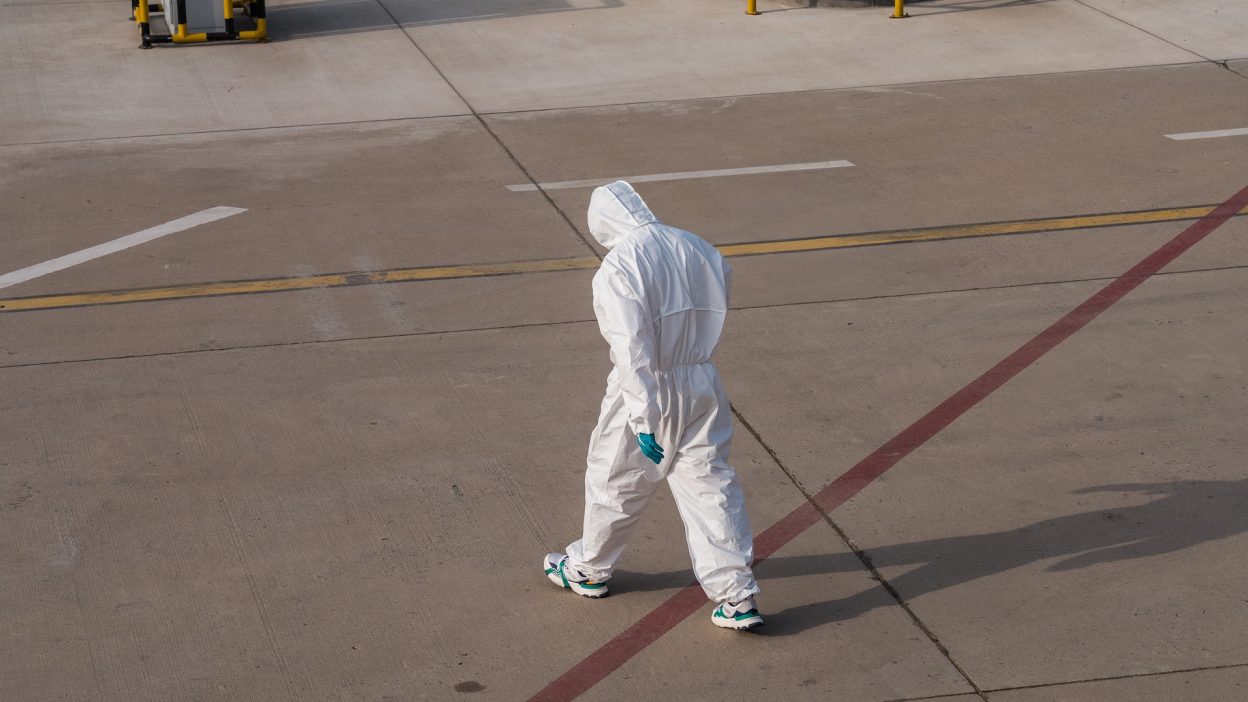The Forgotten Plague That Killed Millions Amid War And Revolution
1918–1922: When Typhus Turned Russia into a Living Nightmare
The 1918–1922 Russia Typhus Epidemic was one of the deadliest disease outbreaks in modern history, yet it remains overshadowed by the chaos of war and revolution. As the Russian Civil War (1917–1922) raged on, another crisis unfolded—an invisible enemy that took millions of lives.
Typhus fever, a disease spread by lice carrying the Rickettsia prowazekii bacterium, found the perfect breeding ground in war-torn Russia. The country was already devastated by civil war, famine, and economic collapse, and millions of displaced people lived in overcrowded, unsanitary conditions. These factors created a humanitarian disaster of unprecedented scale.
As hospitals overflowed, and entire communities fell, the Bolshevik government’s response was slow, disorganised, and sometimes ruthless. By the time strict disease control measures were implemented, millions had already perished.
This epidemic serves as a dark reminder of how war, government failures, and unsanitary conditions can turn an outbreak into a catastrophe.
The Disease That Thrived in War and Chaos
Epidemic typhus was not a new disease. Historically, it had erupted during times of war, displacement, and famine, thriving in cramped, unhygienic environments.
In the case of Russia (1918–1922), the war had left cities in ruins, forced millions into poverty, and created vast populations of refugees. With lice-ridden clothing, unwashed bodies, and a lack of medical treatment, the disease had everything it needed to spread uncontrollably.
How Typhus Spread Across Russia
The disease did not spread through the air or water. Instead, it was carried by body lice, which thrived in:
- Overcrowded Trenches and Barracks – Soldiers in the Red and White Armies were particularly vulnerable, as lice spread quickly in military encampments.
- Prisoner Camps and Forced Labour Colonies – Detainees lived in inhumane conditions, making them easy victims of the epidemic.
- Refugee Settlements – With millions displaced due to war, filthy, lice-infested camps became epidemic hotspots.
- Factories and Workhouses – Workers sweating in close quarters provided ideal conditions for lice infestations.
- Public Transport – As desperate people fled war zones, trains and carriages became breeding grounds for infection.
The symptoms of typhus were brutal: sudden high fever, severe headache, rashes, muscle pain, and delirium. Many patients slipped into a coma before death, and those who survived were often left with permanent organ damage.
The Numbers Behind the Horror: Deaths, Infections & Impact
The scale of the epidemic was staggering. With limited record-keeping, exact numbers remain uncertain, but estimates reveal the true devastation:
Death Toll: More than 3 million people died, and some sources suggest up to 6 million perished, making it one of the deadliest outbreaks in history.
Infection Rate: Around 25 to 30 million people were infected with typhus, overwhelming hospitals and treatment centres.
Hardest-Hit Areas: Rural regions suffered the most, as villages had no medical resources to contain outbreaks. Entire communities were wiped out.
War vs. Disease Deaths: Typhus killed more Russians than the entire Civil War, showing how disease can be more lethal than weapons.
Population Collapse: Between war, disease, and famine, Russia’s population shrank significantly, affecting future generations.
Even the Bolsheviks acknowledged that typhus was a greater threat than war, but their response was slow and often mismanaged.
A Nation on Its Knees: The Soviet Government’s Struggle
The epidemic was not just a public health crisis—it crippled the Red Army and threatened Bolshevik rule.
By 1919, entire regiments of Red Army soldiers were too sick to fight. Some estimates suggest millions of troops were infected, leading Lenin to state:
“Either socialism will defeat the louse, or the louse will defeat socialism.”
Factories shut down, transportation collapsed, and cities became paralysed by the sheer number of sick and dying. Without functioning industries, agriculture, or supply chains, the nation was on the brink of total collapse.
The Soviet Government’s Silence: A Tragic Cover-Up?
Instead of acknowledging the full scale of the epidemic, the Bolsheviks censored information and downplayed the disaster.
Why?
- To Avoid Public Panic – Admitting the epidemic was out of control could have shaken public confidence in the Soviet regime.
- To Maintain Political Power – Acknowledging failure could strengthen anti-Bolshevik sentiment among the people.
- To Preserve National Image – The Soviet Union wanted to appear strong internationally, despite the crisis.
Reports of mass graves, entire villages wiped out, and soldiers dying in their barracks were delayed or suppressed. Instead of transparency, propaganda focused on military victories and political speeches, ignoring the millions suffering and dying.
The Epidemic’s Worst Victims: How the Poor Suffered the Most
As always, disease hit the poorest hardest. The elite had better access to food, medicine, and sanitation, while peasants, prisoners, and refugees were left defenceless.
Who Suffered the Most?
- Prisoners and Forced Labourers – Infected by lice in overcrowded cells, thousands died without medical care.
- Homeless Orphans – Many children died alone on the streets, their bodies left uncollected.
- Peasants in Isolated Villages – Entire villages disappeared as disease spread unchecked.
- Women and Elderly – Often last in line for medical care, they had little chance of survival.
The government’s quarantine measures, while necessary, often resulted in communities being abandoned, leaving thousands to die in isolation.
The Ruthless ‘Cleansing’ Measures Taken to Stop Typhus
- Forced Delousing Centres – People were shaved, stripped, and covered in chemical disinfectants, a humiliating process.
- Entire Cities Sealed Off – Infected regions were completely isolated, with authorities blocking entry and exit.
- Overcrowded Hospitals – Treatment centres became disease hotspots, with doctors dying alongside patients.
- Brutal Quarantine Enforcement – Suspected disease carriers were executed in some areas.
How the Epidemic Was Finally Controlled
By 1922, improved public health measures, vaccination efforts, and mass hygiene campaigns slowed the epidemic. However, the damage was permanent.
Could a Typhus Epidemic Happen Again?
Typhus remains a threat in war zones and refugee camps. If proper sanitation, medical aid, and disease control are not prioritised, another outbreak could easily occur.
FAQs
How did the 1918–1922 typhus epidemic start?
War, famine, and unsanitary conditions allowed lice-borne typhus to spread uncontrollably.
What was the death toll?
Over 3 million people died, though some estimates suggest even higher numbers.
What stopped the epidemic?
Vaccinations, improved sanitation, and mass quarantine measures finally slowed the outbreak.
Did the Soviet government cover it up?
Yes, officials censored reports and delayed information to maintain control.Could typhus return?
Yes, it still lurks in overcrowded refugee camps and conflict zones today.




